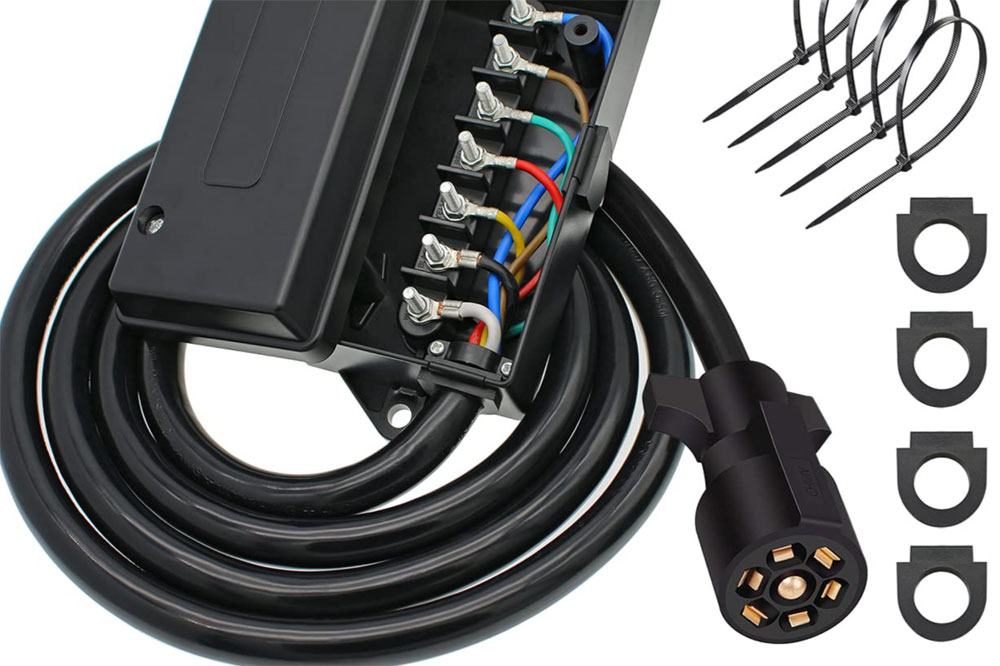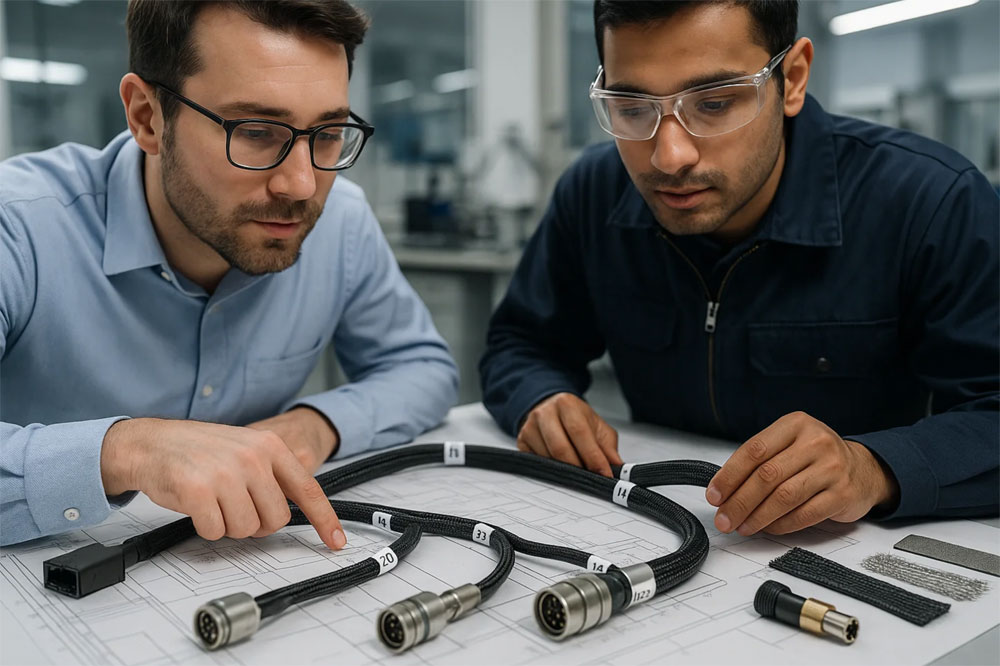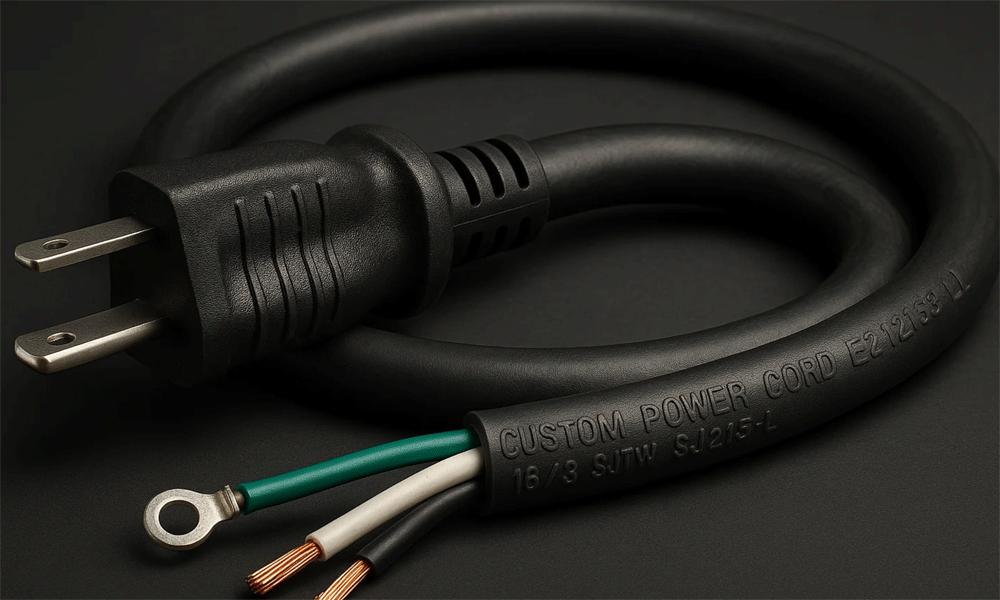In any complex electronic or electrical system, the cable harness serves as the circulatory and nervous system. It transmits power and data, ensuring that everything from a vehicle’s engine to life-saving medical equipment operates with precision and reliability. However, the hidden quality risks within a seemingly simple harness can lead to catastrophic failures.
For quality engineers and purchasing managers, the ultimate challenge is ensuring that every batch of a custom cable harness assembly from a supplier is 100% compliant. The answer lies in rigorous, systematic testing based on globally recognized industry standards.
This article provides an in-depth exploration of the essential cable harness testing standards that every custom assembly must pass. We will explain the importance of each test—from Hi-Pot to Continuity—and clarify how standards like ISO 9001, IATF 16949, and IPC/WHMA-A-620 safeguard your product’s quality.
Table of Contents
ToggleWhy Testing Matters: The Cost of Prevention vs. The Cost of Failure
There’s a golden rule in manufacturing: “$1 spent on prevention can save $10 on correction and $100 on failure costs.” This is especially true for cable harnesses.
Prevention Cost: This is the investment made during the manufacturing process to ensure quality. It includes training operators on IPC standards, calibrating test equipment, developing detailed Standard Operating Procedures (SOPs), and performing 100% electrical testing. These are proactive, controllable investments.
Failure Cost: This is the cost incurred when a product fails after delivery. For a cable harness, this goes far beyond the price of a replacement part. It can include:
Expensive Field Recalls: Imagine recalling thousands of vehicles or medical devices already in the field due to a single harness defect. The costs of logistics, labor, and reputational damage would be astronomical.
Systemic Damage: A short-circuited harness can destroy expensive ECUs (Electronic Control Units) or other critical components.
Safety Risks: In aerospace, medical, or automotive applications, a harness failure can directly endanger human lives.
Brand Erosion: A single major quality incident can demolish years of customer trust.
Clearly, investing in rigorous, comprehensive testing upfront is the most economical and responsible way to mitigate massive downstream risks. A professional harness manufacturer views testing not as a cost center, but as an integral part of its value proposition.
The Key Quality Standards in the Harness Industry
“Good quality” isn’t a subjective description; it must be quantified and standardized. In the wire harness industry, the following three standards form the bedrock of quality management.
ISO 9001: The Foundation of a Quality Management System
ISO 9001 is a global standard for a Quality Management System (QMS). It doesn’t specify what a harness’s crimp height or insulation resistance should be. Instead, it defines how an organization must operate to consistently provide products that meet customer and regulatory requirements.
For a harness buyer, a supplier with ISO 9001 certification means:
Standardized Processes: From order receipt and raw material procurement to production, testing, and shipping, there is a documented, traceable process.
Continuous Improvement: The system requires the company to identify problems, analyze root causes, and implement corrective/preventive actions in a continuous cycle.
Risk-Based Thinking: A certified organization is required to proactively identify and manage risks that could affect product quality.
In short, ISO 9001 ensures your supplier has a stable and reliable “operating platform.”
IATF 16949: The Automotive Industry's Stringent Requirements
If ISO 9001 is the foundation, IATF 16949 is the automotive industry’s “reinforced” version. It incorporates all the requirements of ISO 9001 and adds its own, much stricter conditions.
For automotive-grade harnesses, IATF 16949 certification is critical because it mandates the use of core tools like:
APQP (Advanced Product Quality Planning): Systematically planning all quality control points during the product development phase.
PPAP (Production Part Approval Process): Proving to the customer, before mass production, that the manufacturing process is capable of consistently producing compliant parts.
FMEA (Failure Mode and Effects Analysis): Proactively anticipating all potential manufacturing defects and implementing measures to prevent them.
Choosing an IATF 16949 certified supplier means you are partnering with an organization accustomed to operating within a “zero-defect” culture.
IPC/WHMA-A-620: The "Bible" of Harness Acceptability
This is the most important and specific product standard in the industry. IPC/WHMA-A-620 (or IPC-620) provides the detailed visual acceptability criteria for cable and wire harness assemblies. Using clear images and descriptions, it defines what is “Acceptable,” “Unacceptable,” and a “Process Indicator.”
IPC-620 divides products into three classes:
Class 1: General Electronic Products
The primary requirement is the function of the completed assembly. Suitable for consumer products where cosmetic appearance and extended reliability are not critical.
Class 2: Dedicated Service Electronic Products
Requires continued high performance and extended life. Uninterrupted service is desired, but not critical. This is the default standard for most industrial-grade custom harnesses.
Class 3: High Performance/Harsh Environment Electronic Products
Requires continued high performance and performance-on-demand is critical. Equipment downtime is not an option. Used in aerospace, military, and life-support medical devices.
When you specify that a product must meet IPC-620 Class 2 or Class 3, you are taking the first crucial step in ensuring the physical quality of the final product.
Core Laboratory Tests Explained
Beyond system and visual standards, the functional and durability aspects of a harness must be verified through a series of physical and electrical tests.
Hi-Pot (Dielectric Withstanding Voltage) Test
Purpose: To verify the integrity of the insulation material. It ensures the insulation can withstand a momentary high-voltage surge without breaking down, preventing shorts between conductors or between a conductor and the shield/environment.
Process: A voltage much higher than the normal operating voltage (e.g., 1500V AC or 2000V DC) is applied between specified conductors for a set duration (typically 60 seconds).
Importance: This is a critical safety test. It can detect pinholes, scratches, or material defects in the insulation that may have occurred during processing, effectively preventing equipment damage, fire, or shock hazards.
Continuity Test
Purpose: To ensure that every point-to-point connection in the harness is correct, with no open circuits or mis-wirings.
Process: A dedicated harness tester automatically checks that every terminal is correctly connected to its corresponding pin with a very low resistance (e.g., <1 Ohm).
Importance: This is the most fundamental functional test. A 100% continuity test guarantees that the harness you receive is “plug-and-play,” avoiding costly delays and troubleshooting during final installation.
Pull-Force & Crimp Quality Test
Purpose: To verify that the crimp connection between the terminal and the wire is mechanically strong and reliable.
Process:
Pull-Force Test: A crimped terminal and wire are mounted in a pull tester. Axial force is applied until the wire pulls out or breaks. This force is recorded and compared against the values specified in IPC-620.
Crimp Height/Width Measurement: A micrometer is used to precisely measure the height and width of the crimped area. This is the most critical non-destructive indicator of a quality crimp.
Importance: Crimping is the most critical process step in harness manufacturing. A bad crimp can lead to intermittent connections under vibration or temperature changes—a “ghost” failure that is notoriously difficult to diagnose.
Environmental Tests: Salt Spray & IP69K
Purpose: To simulate the extreme conditions a harness might face in its real-world application, verifying its long-term durability.
Salt Spray Test: Samples are placed in a chamber filled with a salt fog to simulate highly corrosive environments (like marine applications or roads treated with de-icing salt), checking for corrosion resistance of terminals, connectors, and sheathing.
IP69K Test: This is the highest level of ingress protection. The 6K signifies it is completely dust-tight. The 9K signifies it can withstand high-temperature (80°C), high-pressure (80-100 bar) water jets from multiple angles.
Importance: For harnesses used outdoors, in engine compartments, food processing plants, or on construction machinery, these tests are vital. They ensure the harness will not fail over its service life due to water ingress, dust, or corrosion.
Standards vs. Applicable Industries
| Test / Standard | Key Industries | Critical Problem Solved |
| IPC/WHMA-A-620 | All industries using harnesses | The “gold standard” for physical & visual quality |
| 100% Electrical Test | All, esp. Medical, Industrial, Auto | Functional correctness, prevents shorts/opens |
| Pull-Force Test | All industries | Mechanical strength of crimps, prevents poor contact |
| IATF 16949 | Automotive & its supply chain | Systemic process control, pursuit of zero defects |
| IP69K / Salt Spray | Heavy Machinery, Marine, Agriculture | Waterproof, dustproof, and corrosion-proof in harsh environments |
Pass/Fail Criteria & Data Sheets
Professional testing relies on objective criteria and complete data records. The result of every test must be compared against the IPC-620 standard or a customer-specific requirement.
A qualified supplier should provide a detailed Quality Data Sheet or Final Inspection Report with every shipment. This report should include, at a minimum:
Part number and lot number
List of tests performed
The standard for each test (e.g., Hi-Pot Test: 1500V AC, 1mA, 60s, No Breakdown)
The actual measured results
The final Pass/Fail verdict
Signatures of the tester and auditor
How We Implement Standards: Process Control + 100% Inspection
Owning test equipment isn’t enough; applying it systematically is what counts. Our quality philosophy is to “build quality into the process, not just inspect it at the end.”
In-Process Control: We don’t wait until a harness is fully assembled to test it. At critical steps, like after crimping, we use pull-testers for first-piece, in-process, and last-piece inspection to ensure the crimping dies are stable.
100% Inspection vs. Sampling: For all tests that determine the core electrical function—Continuity, Hi-Pot, and Insulation Resistance—we insist on 100% full inspection for every single harness that leaves our facility. We believe the risk associated with sampling for critical-to-function parts is unacceptable. This rigorous approach is how we guarantee the reliability of every cable harness assembly we deliver. For destructive tests like pull-force, we use scientific sampling plans (like AQL).
Operator Training & Certification: All our production and inspection personnel are trained and certified to the IPC/WHMA-A-620 standard, ensuring everyone uses the same “language” to judge quality.
Frequently Asked Questions (FAQ)
Q1: What is the difference between ISO 9001 and IPC/WHMA-A-620? A: ISO 9001 is a system standard that governs a company’s quality management processes to ensure consistency and traceability. IPC/WHMA-A-620 is a product standard that specifically defines the acceptability criteria for the workmanship of a harness (e.g., crimps, soldering, assembly). An excellent supplier must have both.
Q2: Which IPC Class (1, 2, or 3) do I need for my product? A: This depends entirely on your end application. For general consumer electronics, Class 1 may suffice. For industrial equipment, automotive electronics, or high-end commercial products, you should require Class 2 at a minimum. If your product is for aerospace, life-support, or military applications, Class 3 is mandatory.
Q3: How often is your test equipment calibrated? A: All measurement equipment—Hi-Pot testers, pull-testers, micrometers, etc.—must be calibrated periodically (typically annually) by an accredited third-party laboratory. A calibration certificate should be available upon request. This is essential for ensuring the accuracy and reliability of test data.
Conclusion
Choosing a cable harness supplier is about far more than comparing prices. It’s about vetting their deep understanding and rigorous execution of quality standards. From the systemic assurance of ISO 9001 and the zero-defect mentality of IATF 16949 to the meticulous detail of IPC-620 and the unwavering commitment to 100% electrical testing, these elements form the complete picture of high-quality cable harness testing standards.
Ensure your partner can provide and explain their test reports and welcomes a factory audit. This is the foundation for a long-term, reliable partnership.
Ready to define the stringent testing requirements for your next project? Contact our experts today. We can help you customize the ideal testing plan for your application, ensuring every harness you receive is built to last.



